If you are still on the fence about taking yoga classes, then you might want to first try out these 26 Bikram Yoga poses. A variation of hot yoga, Bikram Yoga is an offshoot of the more traditional hatha style of yoga, meaning it involves a variety of set Bikram poses (asanas) performed slowly several times over, with each repetition being held for a set amount of time. These Bikram Yoga postures are great for stretching out parts of your body you rarely focus on otherwise. One example of this being the Toe Stand pose which has incredible benefits for your rarely stretched feet.
Breathing exercises (pranayama) are integral to hatha styles of yoga with the ultimate aim being a perfect balance of body and mind. Wherever you are in the world, a Bikram Yoga class will always follow the same systematic approach, aiming to move oxygenated blood around your body. This is thought to not only help tone your muscles, but to also help optimize your health and wellbeing. If you’re somebody who thrives on variety and change, the repetitive nature of Bikram Yoga classes might not be for you. However, if you are looking for structure and routine in an already hectic life, learning these 26 Bikram Yoga poses might have benefits for you.
Like many hot yoga styles, Bikram Yoga is a low impact practice, which makes it suitable for people who aren’t able to undertake high impact exercises. However, as a variation of hot yoga, the classes take place in studios heated to 40°C with humidity at 40% for around 90 minutes. Therefore, it’s important to assess whether you are comfortable taking part in these sessions. If you are, remember to come to class hydrated!
26 Bikram Yoga Poses explained
Each of the following 26 Bikram Yoga Postures have health, fitness, and wellbeing benefits. According to a recent Australian study, practising Bikram Yoga poses and postures can be beneficial for stressed adults with a relatively sedentary life. The study found that 16 weeks of practicing 3 to 5 Bikram Yoga classes per week significantly improved their perceived stress levels, general self-efficacy, and several other health quality of life areas.
Below is a brief overview of these 26 Bikram Yoga Postures and some of their perceived benefits:
1. Pranayama (Standing Deep Breathing)

Each class begins with this standing variation of the deep breathing posture Pranayama. This helps improve blood circulation and focus. The deep inhaling and exhaling may also help with respiratory conditions such as asthma and bronchitis.
2. Ardha Chandrasana (Half Moon Pose)
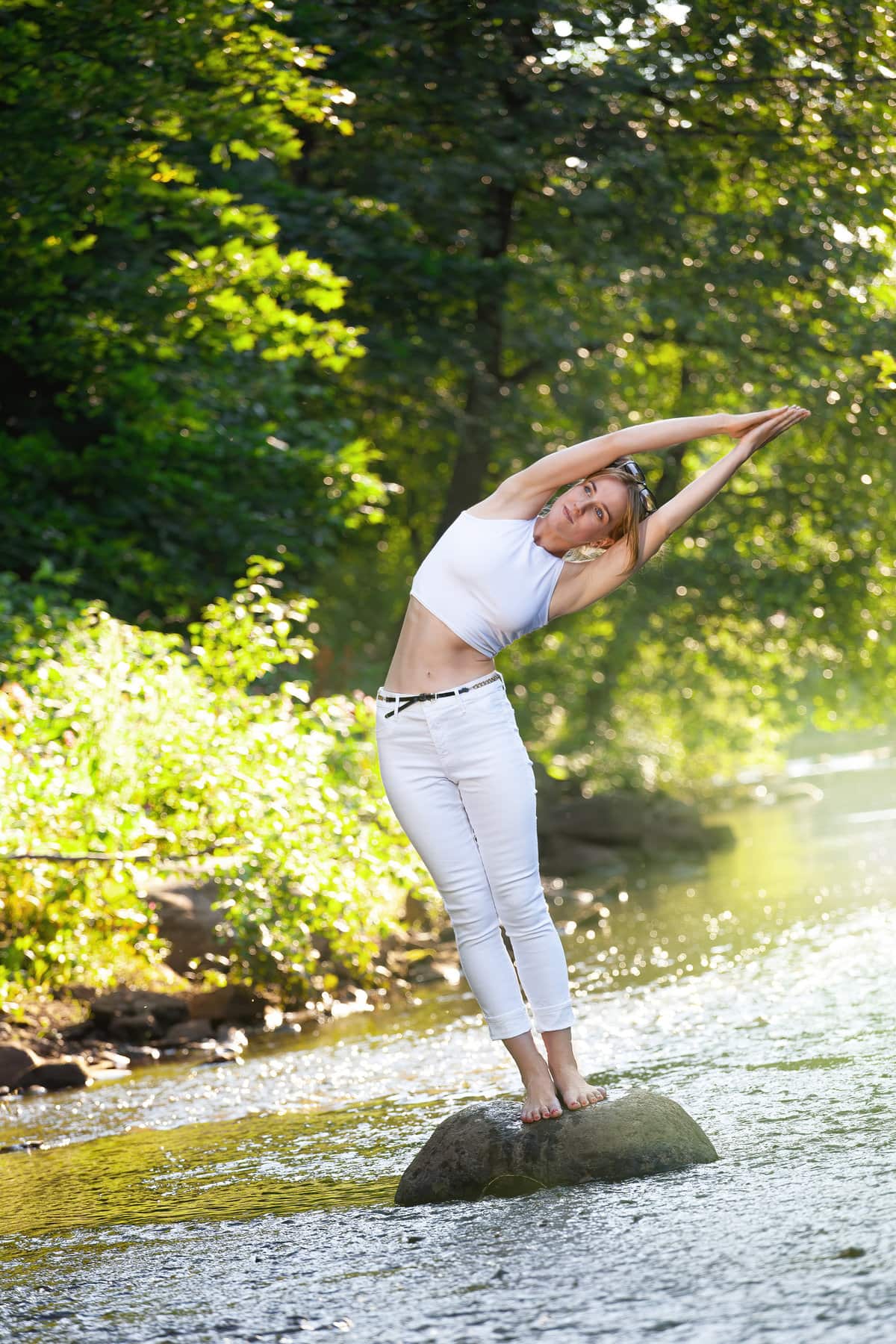
This pose has you stretch your arms above your head and to the side. By doing this the Half Moon Pose helps to strengthen your core – deltoid, latisimus dorsi, trapezius, and oblique muscles. It can also help improve your spinal flexibility and tone your waist, glutes, and thighs.
3. Utkatasana (Awkward Pose)
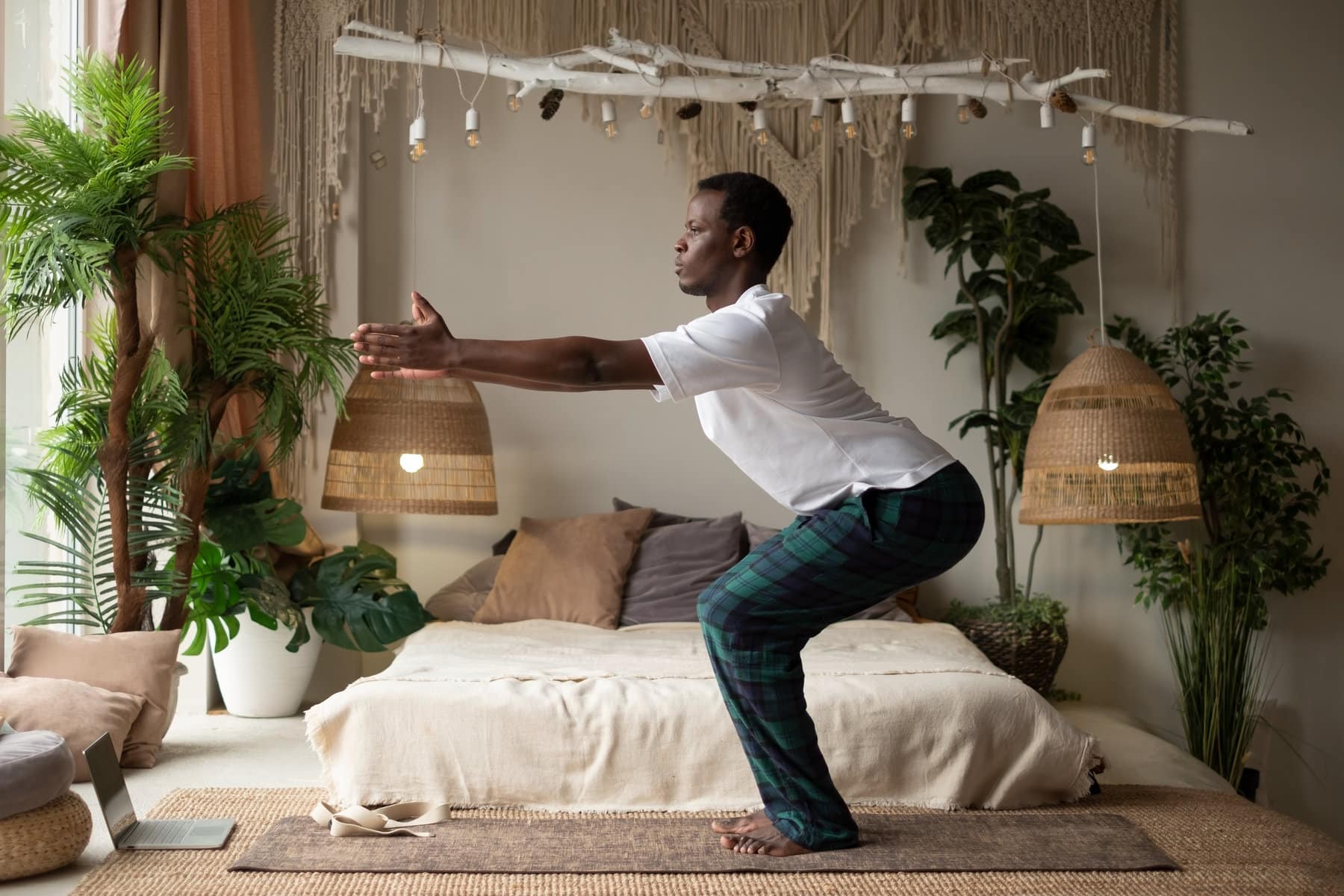
A bit like the more well-known squat, the Awkward Pose has you bend you body at the knees as you keep your arms straight forward to balance you out. This can help to strengthen your hips, thighs, and calves, helping tone and shape your legs. It also helps improve blood circulation and is believed to help people suffering from rheumatoid arthritis, slipped discs in the lower spine, and lower back pain.
4. Garudasana (Eagle Pose)
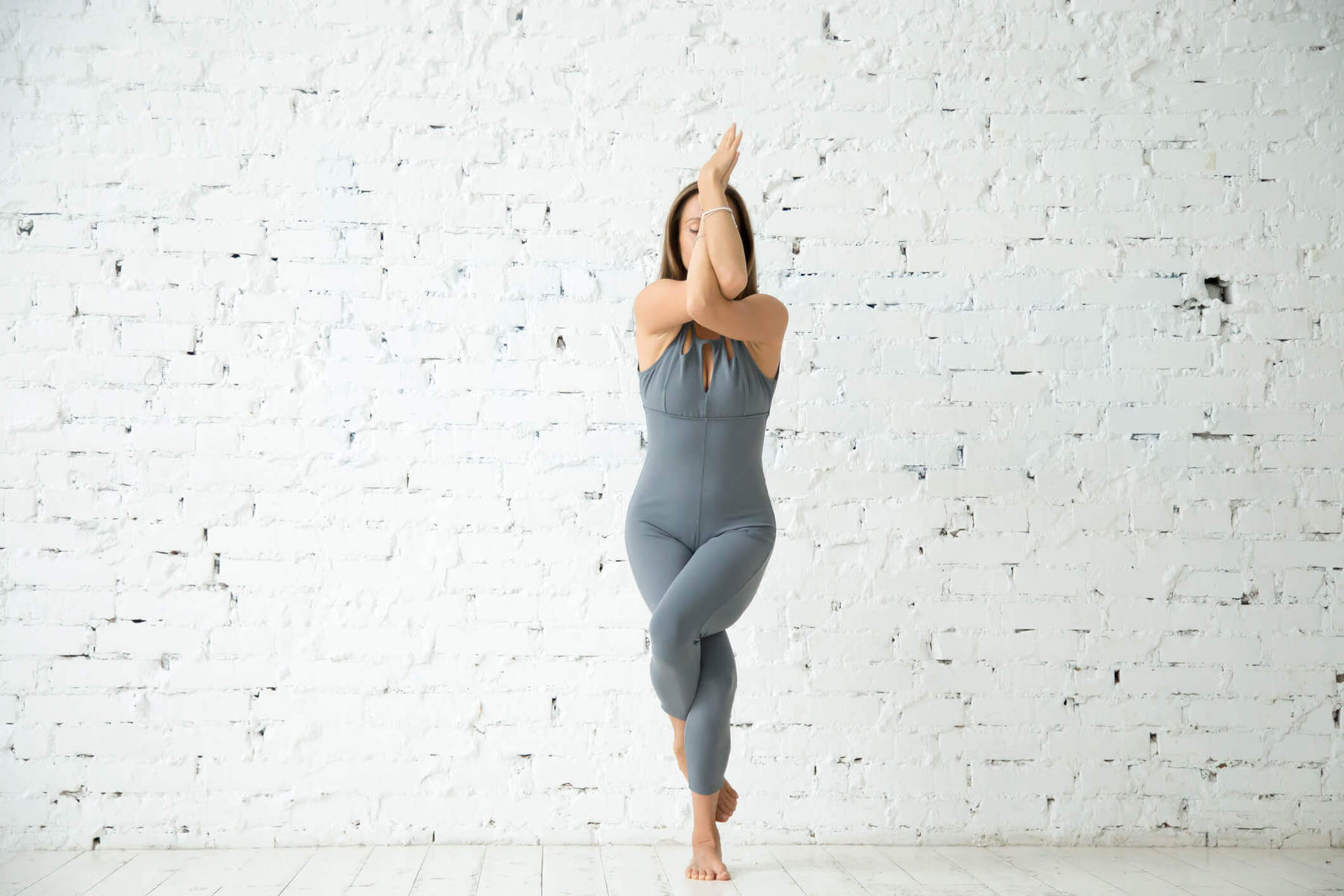
The Eagle Pose has you cross your arms and legs around each other as you try to keep yourself balanced on one leg. This helps to promote joint stability and overall balance throughout your body. By crossing your arms and legs it also helps narrow the flow of blood creating a similar pressure to what we experience during a massage.
5. Dandayamana Janushirasana (Standing Head-to-Knee Pose)
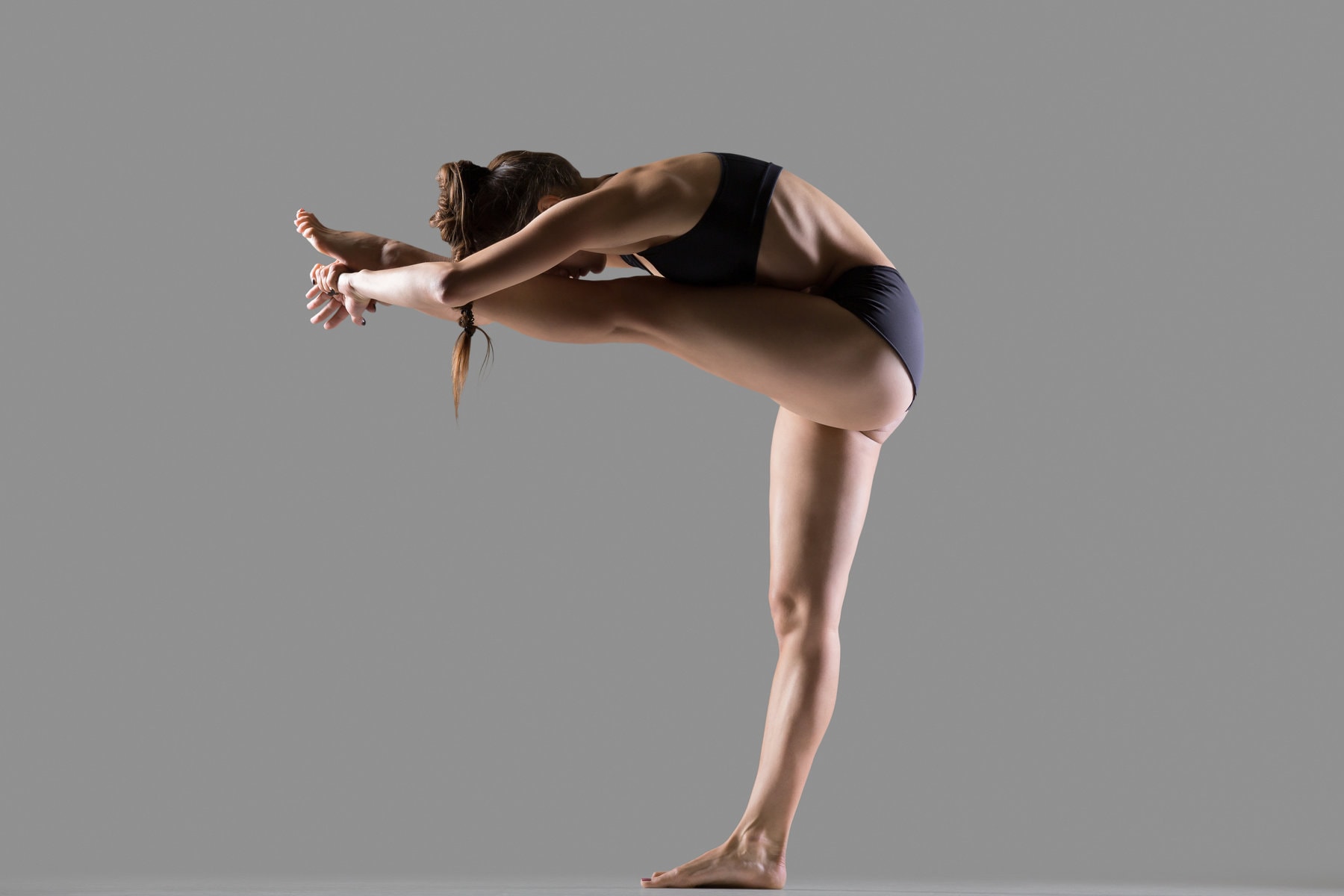
A challenging posture for beginners, the Standing Head-to-Knee Pose has you hold your leg straight out from your body as you pull your head as close to your knee as possible. It’s recommended that you take this pose slow especially if you’re new to Bikram Yoga as it can be difficult to maintain. This posture helps to stretch and improve the flexibility of your hamstrings while engaging all of your body’s main muscle groups. The bend of your hips towards your knees helps promote wellness in your digestive system and reproductive organs.
6. Dandayamana Dhanurasana (Standing Bow Drawing Pose)
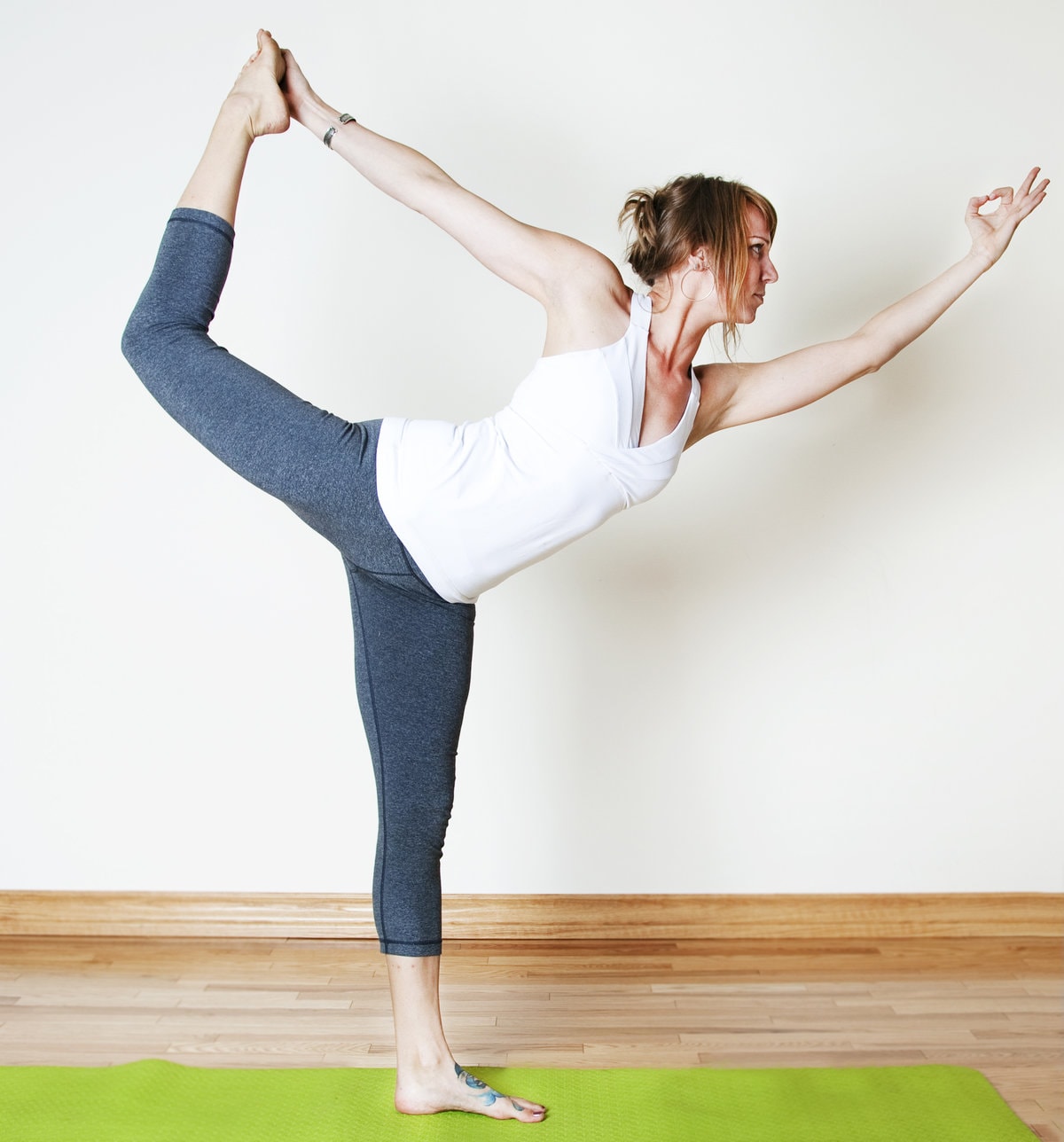
To do the Standing Bow Drawing Pose, we simply raise one of our legs back and hold it as high as possible with one of our hands, while we hold the other hand forward to help balance us. Doing so helps open up your diaphragm, shoulders, and joints, while stimulating the cardiovascular system. This pose helps increase blood circulation to your heart and lungs, while also improving your abdominal strength.
7. Tuladandasana (Balancing Stick Pose)

The Balancing Stick Pose again asks us to stand on one leg, but this time we keep the other leg stretched behind us as straight as possible while keeping our hands held together in front to keep us balanced. This balancing pose helps improve balance and concentration while simultaneously toning your core, legs, arms, and back. This pose is great for weight loss, but can be challenging to hold.
8. Dandayamana Bibhaktapada Paschimotthanasana (Standing Separate-Leg Stretching Pose)
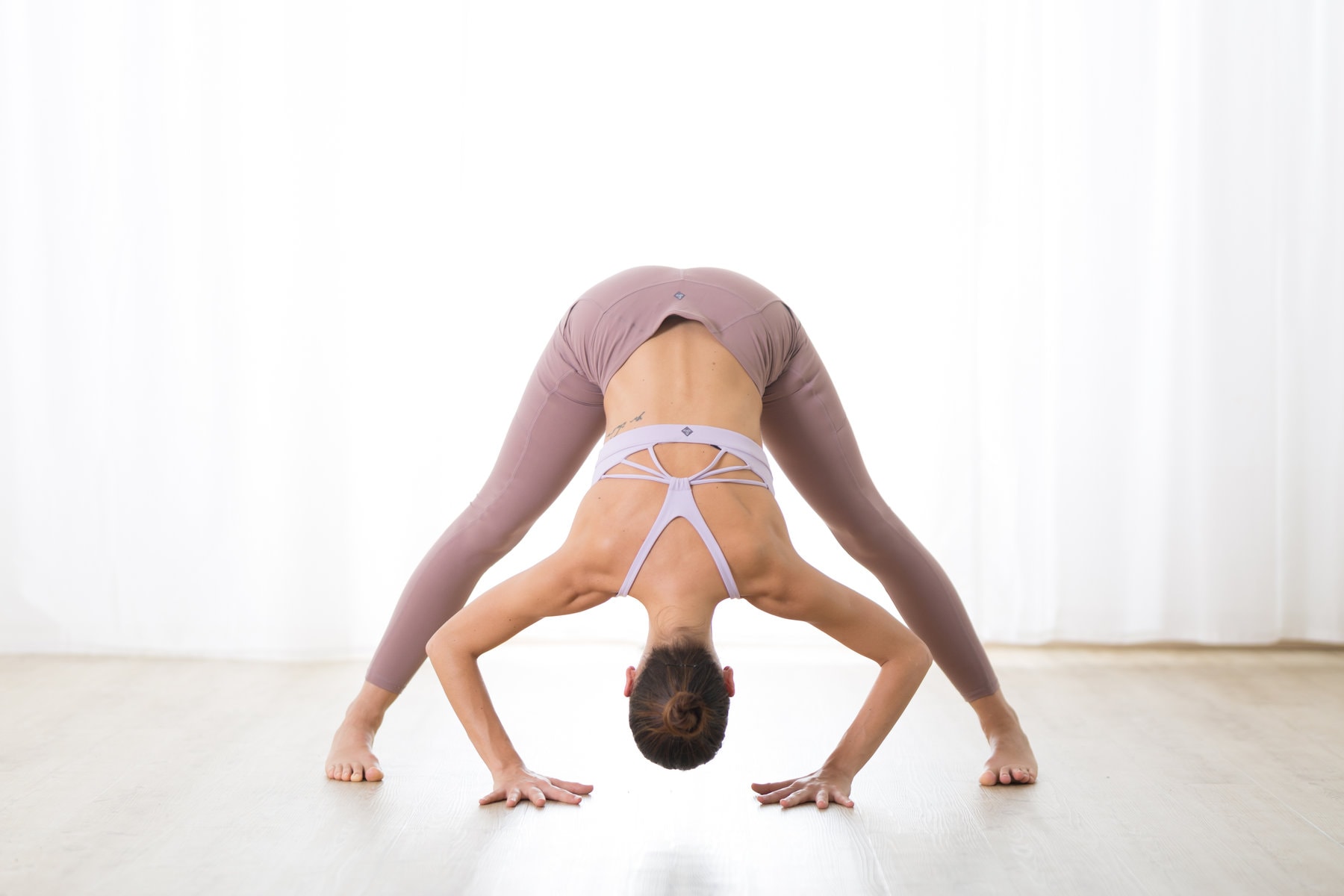
When practising this pose, keep your legs stretched apart as you bend forward and try to hold your head as close to the ground as possible. Doing so helps to stretch and strengthen the sciatic nerves and leg tendons inside you. This may also help prevent sciatica. Additionally, this pose improves abdominal organ function, muscle tone, and flexibility.
9. Trikinasana (Triangle pose)
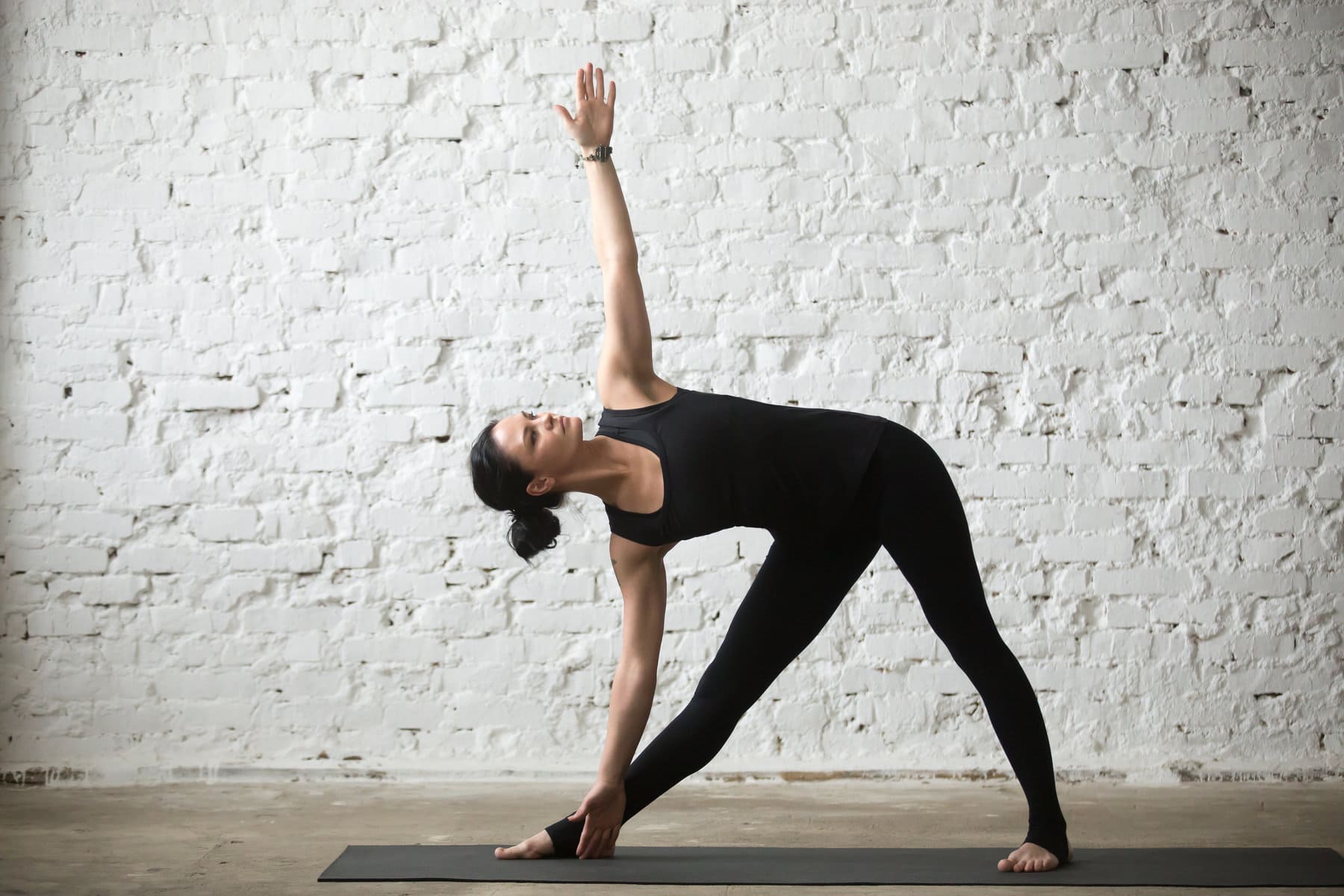
Bend to your side as you pull one arm towards your feet and the other one towards the sky. This helps you open your chest and shoulders so that you can properly strengthen your back, neck, core, legs, feet, and ankles. It’s also thought to be therapeutic for stress, anxiety, infertility, flat feet, and neck pain. This pose may also alleviate back pain during pregnancy.
10. Dandayamana Bibhaktapada Janushirasana (Standing Separate-Leg Head-to-Knee Pose)

With this mouthful of a pose try to lean your body forward, so that your head is as close to your knee as possible. If you can try to have your head and knee touch. This stimulates blood flow to your abdomen and throat. The focus on your thyroid and other glands helps boost your immune system and control your moods. It also improves your flexibility, especially in your hamstrings, calves, and spine.
11. Tadasana (Tree Pose)
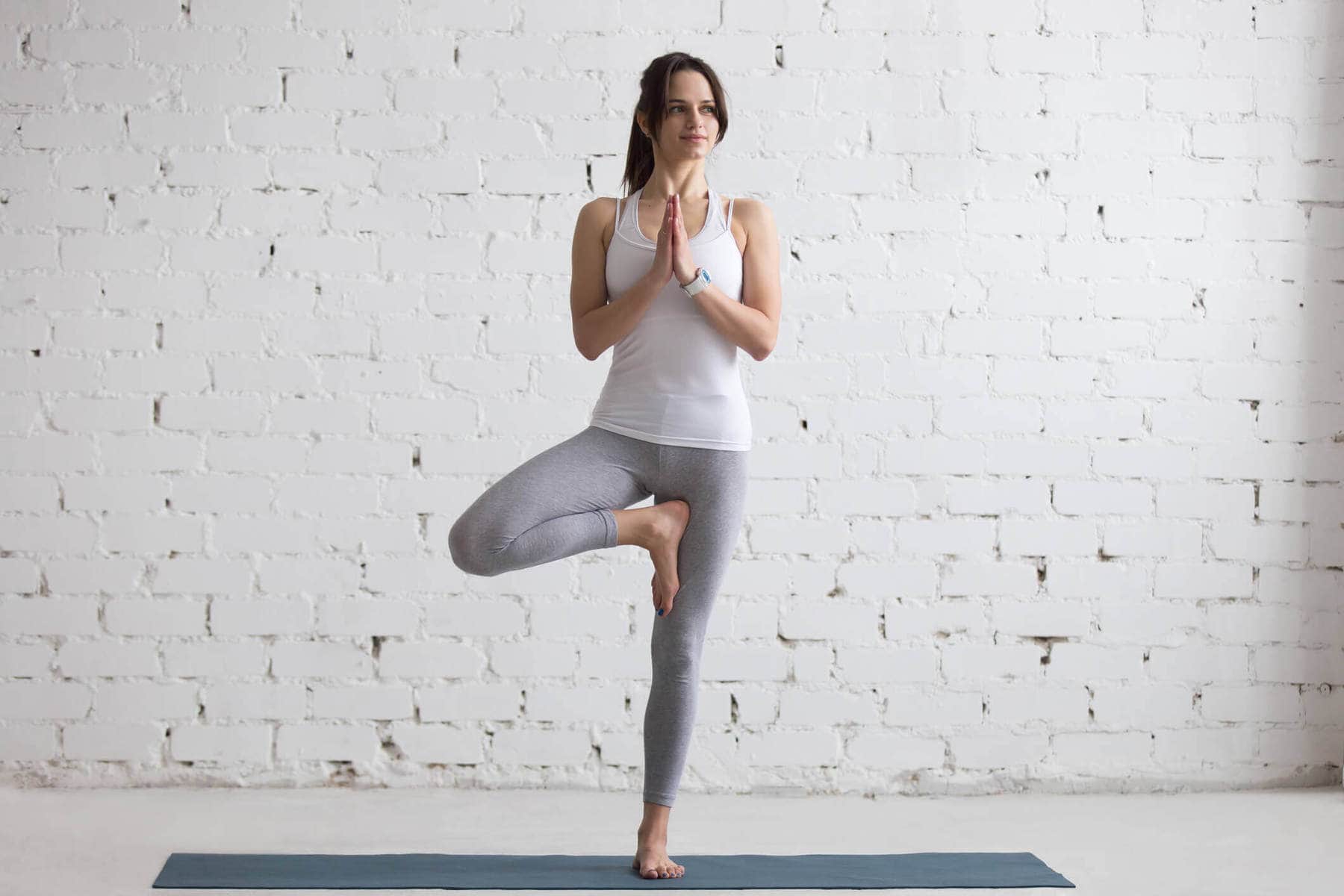
A common pose you’ve likely seen before, the Tree Pose simply asks us to stand on one leg with the other bent at the knee as it rests on the standing leg’s thigh. This stretches your abdomen gently and helps provide balance between the mind and body. The Tree Pose has many benefits as it helps to alleviate pains caused by flat feet and aids with indigestion. It also provides strength to your spine and heart.
12. Padangusthasana (Toe Stand Pose)

The Toe Stand Pose has many benefits for strengthening your feet and leg strength. To practice it we stand on one foot’s toes and then bend that same leg’s knee as you pull your body downwards until you’re standing just above the ground with your other foot resting on the standing leg’s thigh. Practicing the Toe Stand pose actively can have many benefits for improving the nerves in your legs, lungs, and heart. It can also help open up your hips and promote a balance between the mind and body like the aforementioned Tree Pose. It’s believed that the Toe Stand Pose is also great at providing benefits to people suffering from arthritis in the leg and hips as it can also help with relieving pain.
13. Savasana (Corpse Pose)
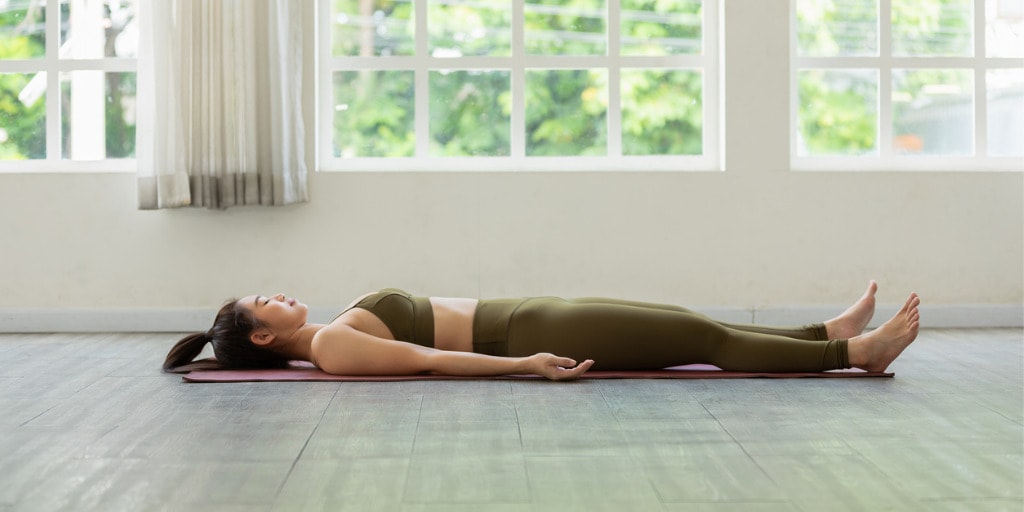
After 12 different standing Bikram Yoga postures, the Corpse Pose helps us to relax as we lie down and let our body cool off. This helps allow your body to achieve complete relaxation and bring a sense of calm and clarity to your mind. This pose lowers your heart rate and reduces your blood pressure making it an important mid-point in this collection of Bikram poses. Furthermore, the still nature of the pose allows for your circulatory system to thrive and deliver oxygen, nutrients, and white blood-cells effectively.
14. Pavanamuktasana (Wind Removing Pose)
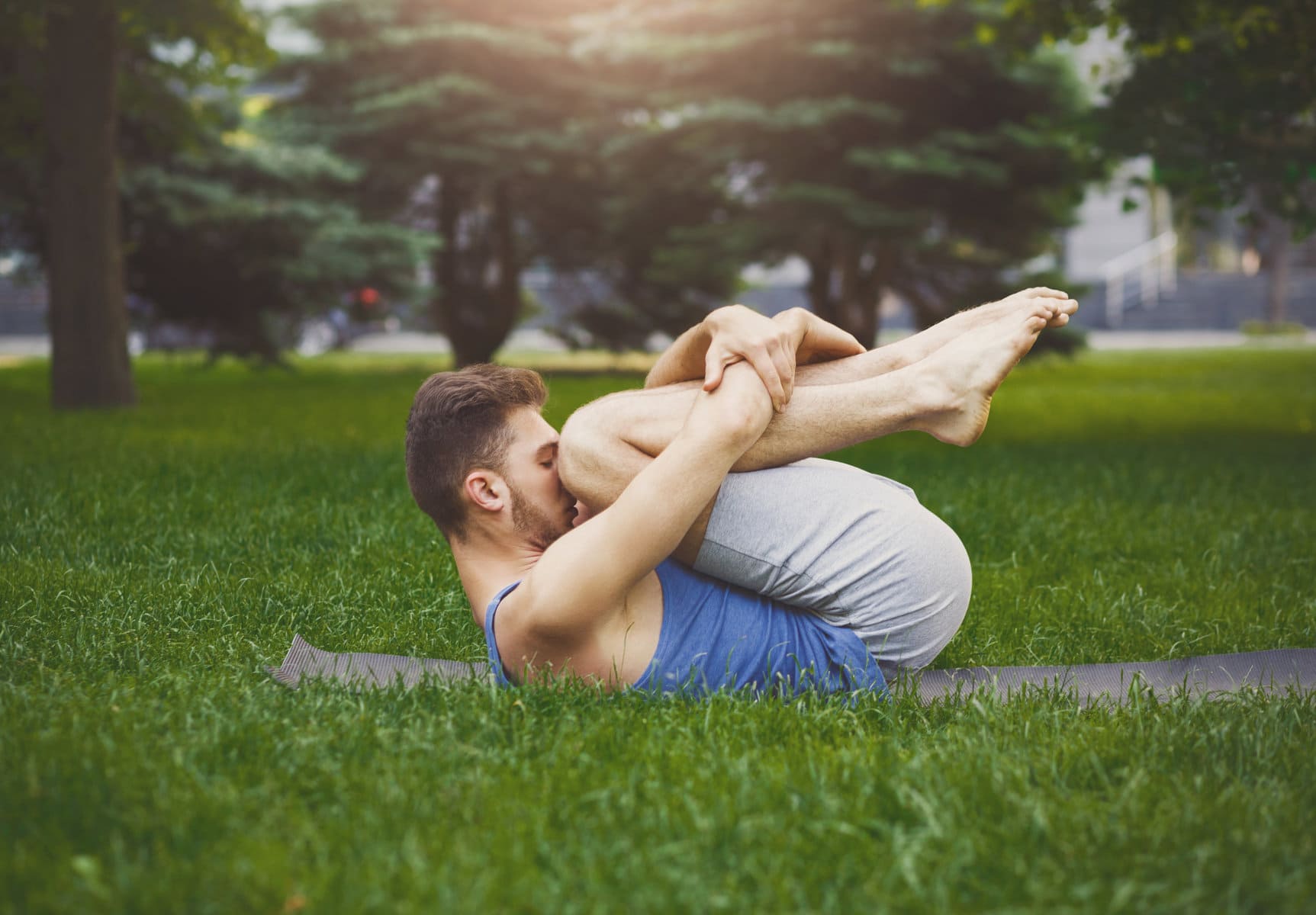
Now on to our sitting Bikram Yoga postures as we start with the Wind Removing pose. Lie down on your back as you curl your legs and head inwards towards your body. Doing so helps aid indigestion, constipation, and other gastrointestinal problems. It also strengthens your back muscles and helps alleviates back pain.
15. Pada Hashtasana (Sit Up)
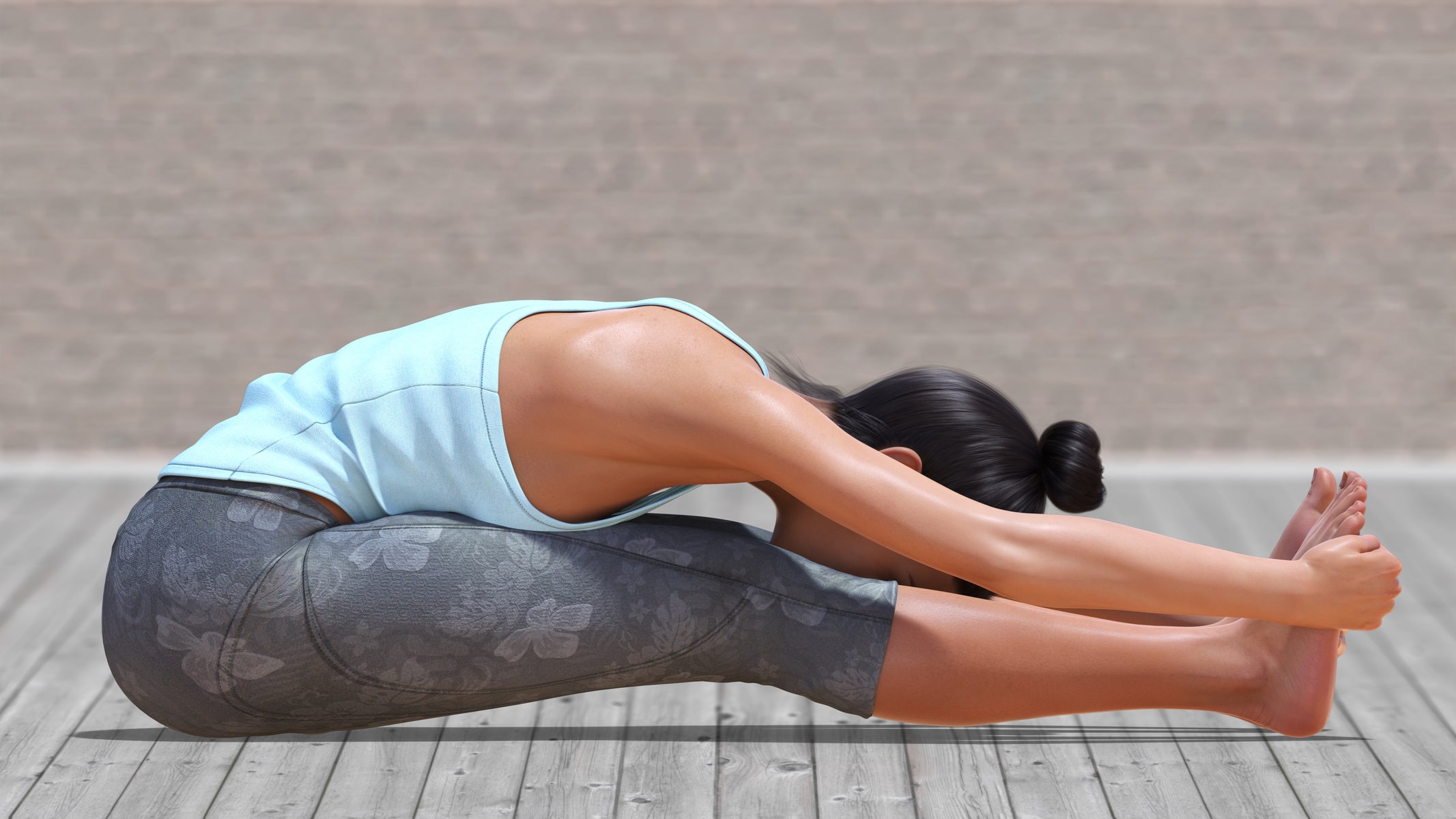
Not quite as intense as the sit ups you likely already know, this posture simply has us lean forward as you try and pull your head towards your knee. This tones your abs and glutes by focusing on your core stomach muscles. The core focus helps improve posture and balance. It can also help control digestive issues.
16. Bhujangasana (Cobra Pose)
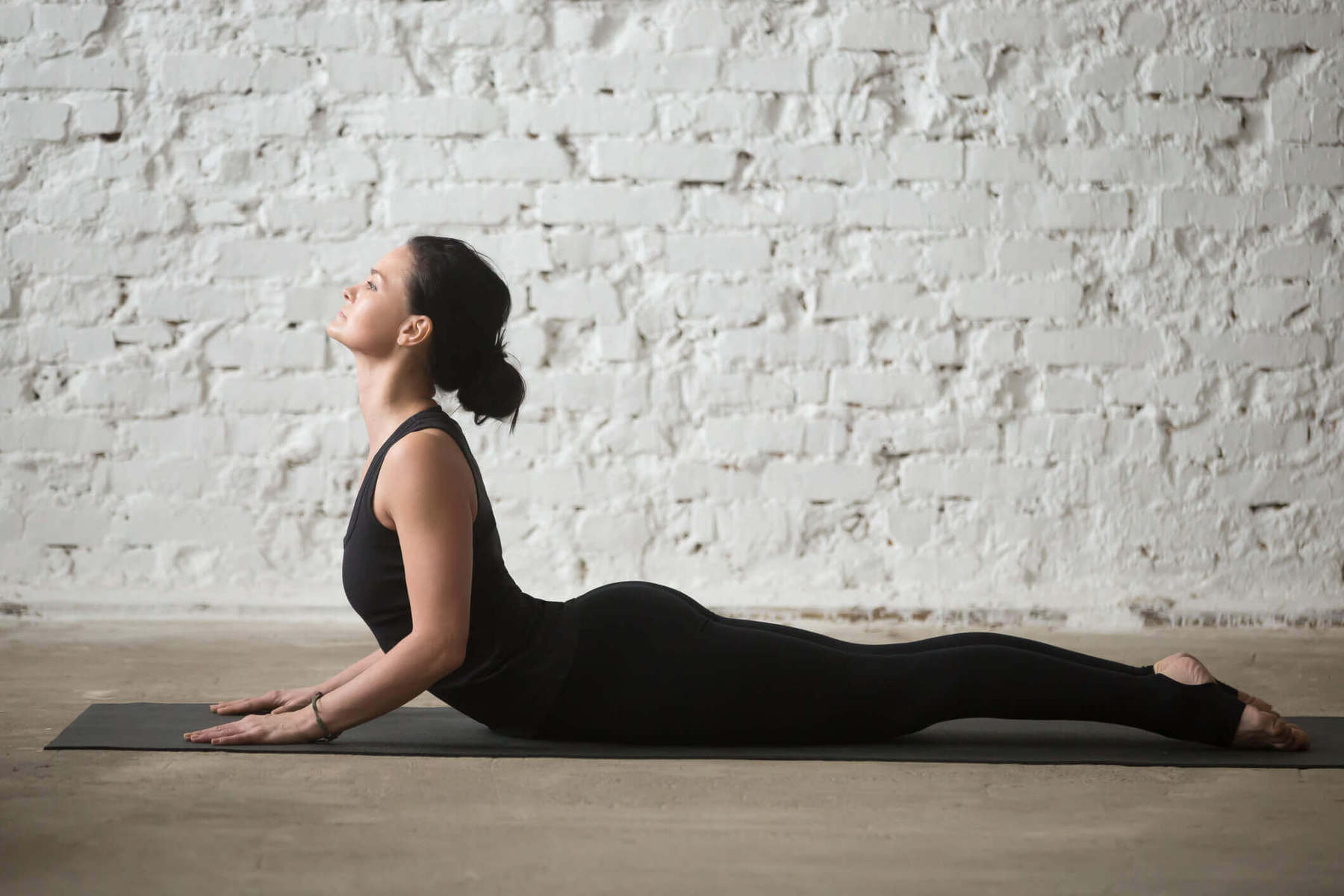
The Cobra Pose has us start lying facedown before pulling your upper body up. The Cobra Pose stretches the muscles in your shoulders, chest, and abs, while also minimizing any stiffness in your lower back. It also tones your glutes and is a mood booster as it helps to relieve stress and fatigue.
17. Salabhasana (Locust Pose)
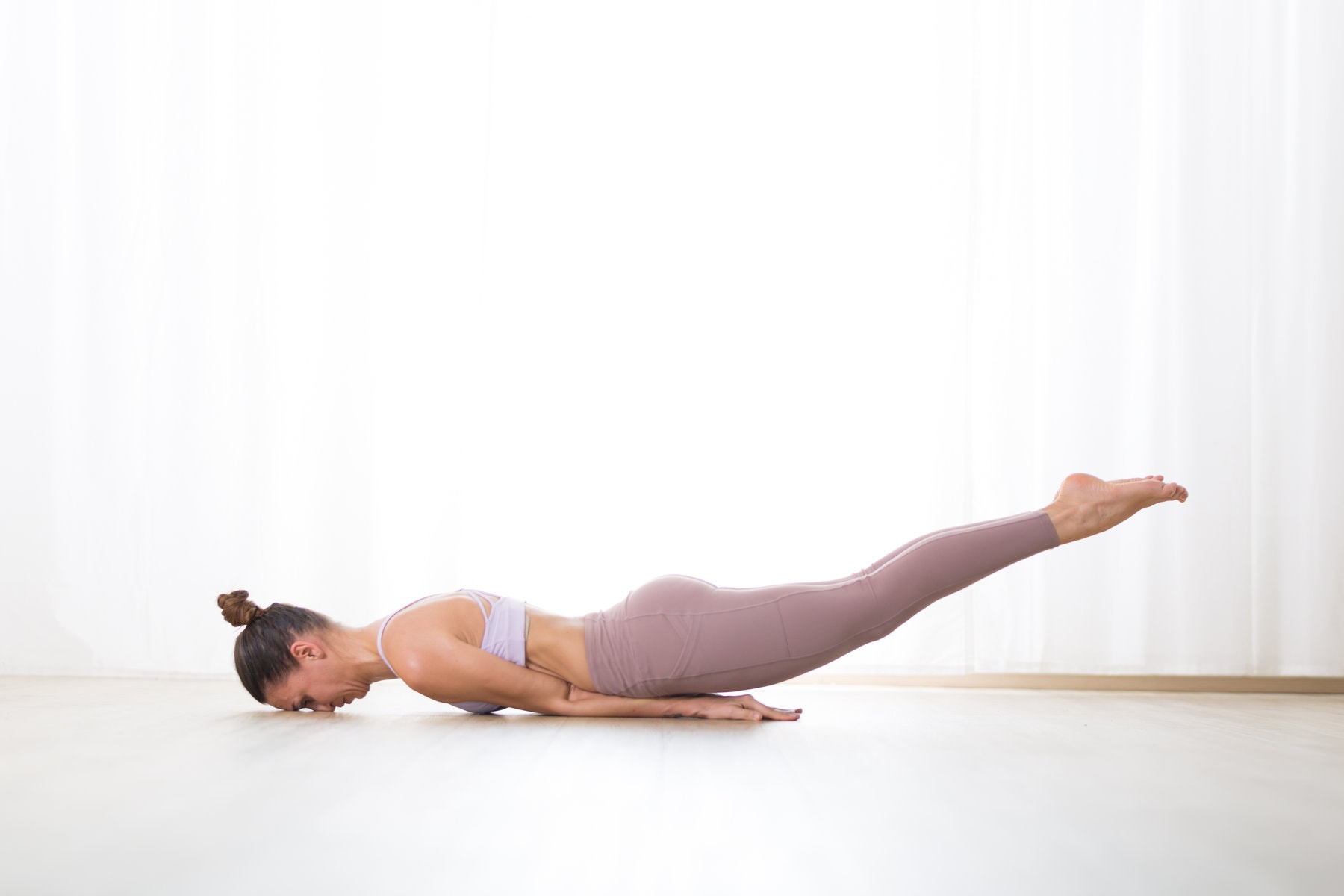
These next two Bikram Yoga Poses come as a pair. First to do the Locust Pose, start by lying face down on the floor, and then bend your lower back upwards so that your legs stretch straight out from your body at an upwards angle. This helps to promote calmness and improve focus. It opens the chest and lengthens the spine, which helps achieve good posture. It also relieves symptoms associated with constipation and indigestion and helps promote a healthy digestive system.
18. Poorna Salabhasana (Full Locust Pose)

Continuing on from the prior position, the Full Locust Pose has us now also stretch your upper body so that it’s also raised from the floor while also stretching your arms outwards. This full-body workout improves posture by stretching the shoulders, chest, tummy, and thighs. This helps to strengthen and tones your glutes, arms, legs, and back. The Full Locust Pose is also believed to reduce stress.
19. Dhanurasana (Bow Pose)
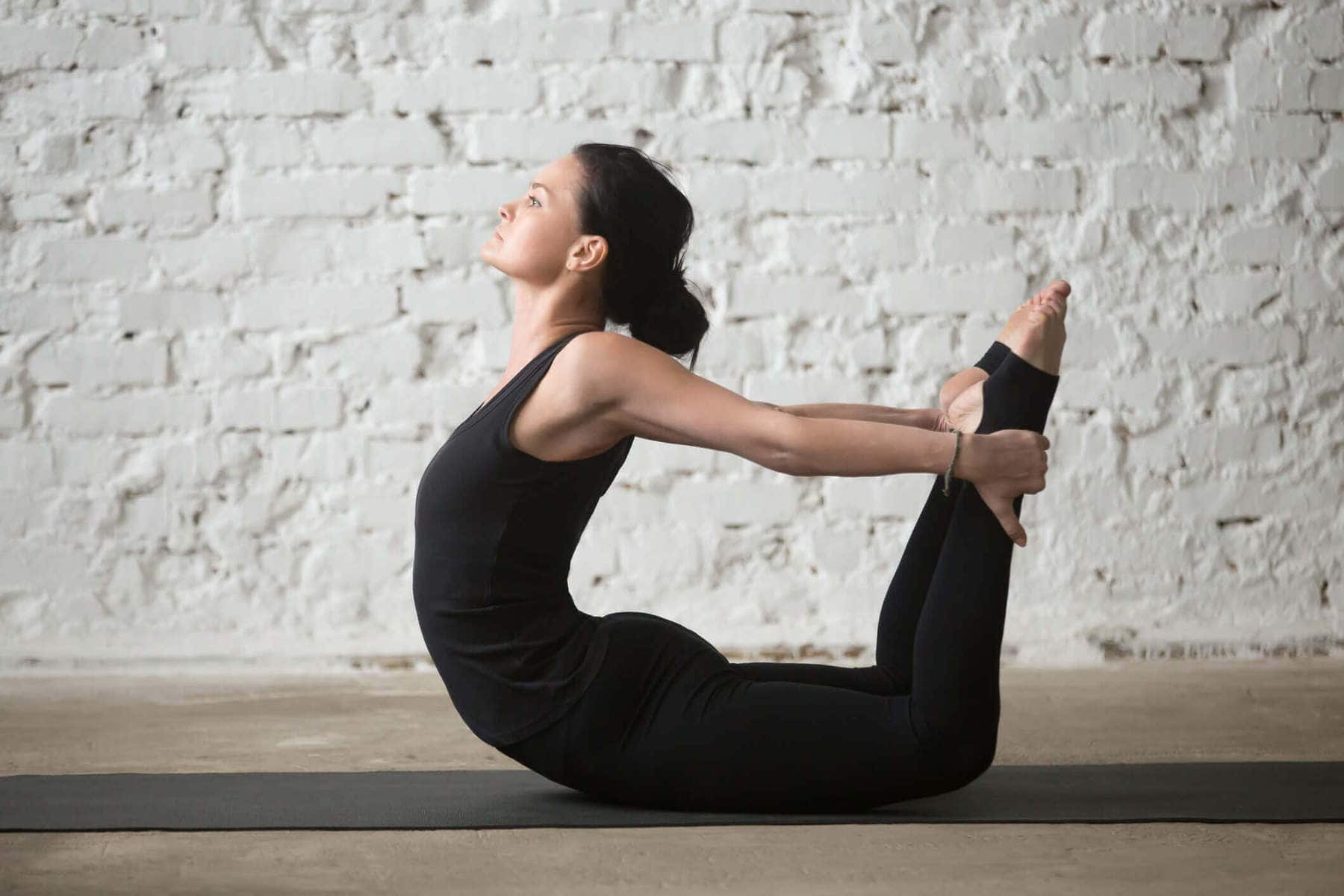
To do the Bow Pose try and hold your ankles with your hands as you bend your upper body and lower legs upwards. This can aid with digestion and improves circulation. It’s a great pose for your back as it helps strengthen your back muscles while improving back flexibility and posture.
20. Supta Vajrasana (Fixed Firm Pose)

Relax from back-bends as we lie down for the Fixed Firm Pose. This one has us us bend our legs at the knees as we lie down, with the soles of our feet facing upwards towards the ceilings. This strengthens your core and tones your thighs. The Fixed Firm Pose also improves blood flow to your kidneys, liver, pancreas, and bowels. As such, it assists in the improved functioning of your immune and digestive systems.
21. Ardha Kurmasana (Half Tortoise Pose)
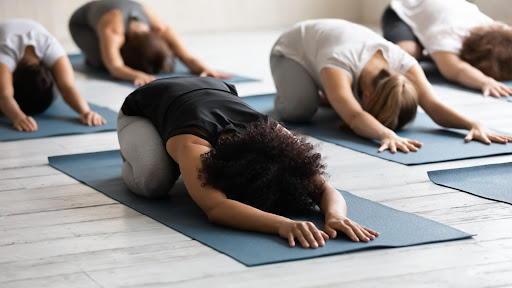
Perhaps more well known as the Child’s Pose, the Half Tortoise Pose has us lean forward as we put our head to the ground between our two outstretched arms. This increases our lung capacity by stretching the lower part of your lungs. It also relaxes the body with the resulting sense of calm often helping insomniacs. The Half Tortoise Pose is also thought to help prevent constipation and ensure the digestive system is in good health.
22. Ustrasana (Camel Pose)
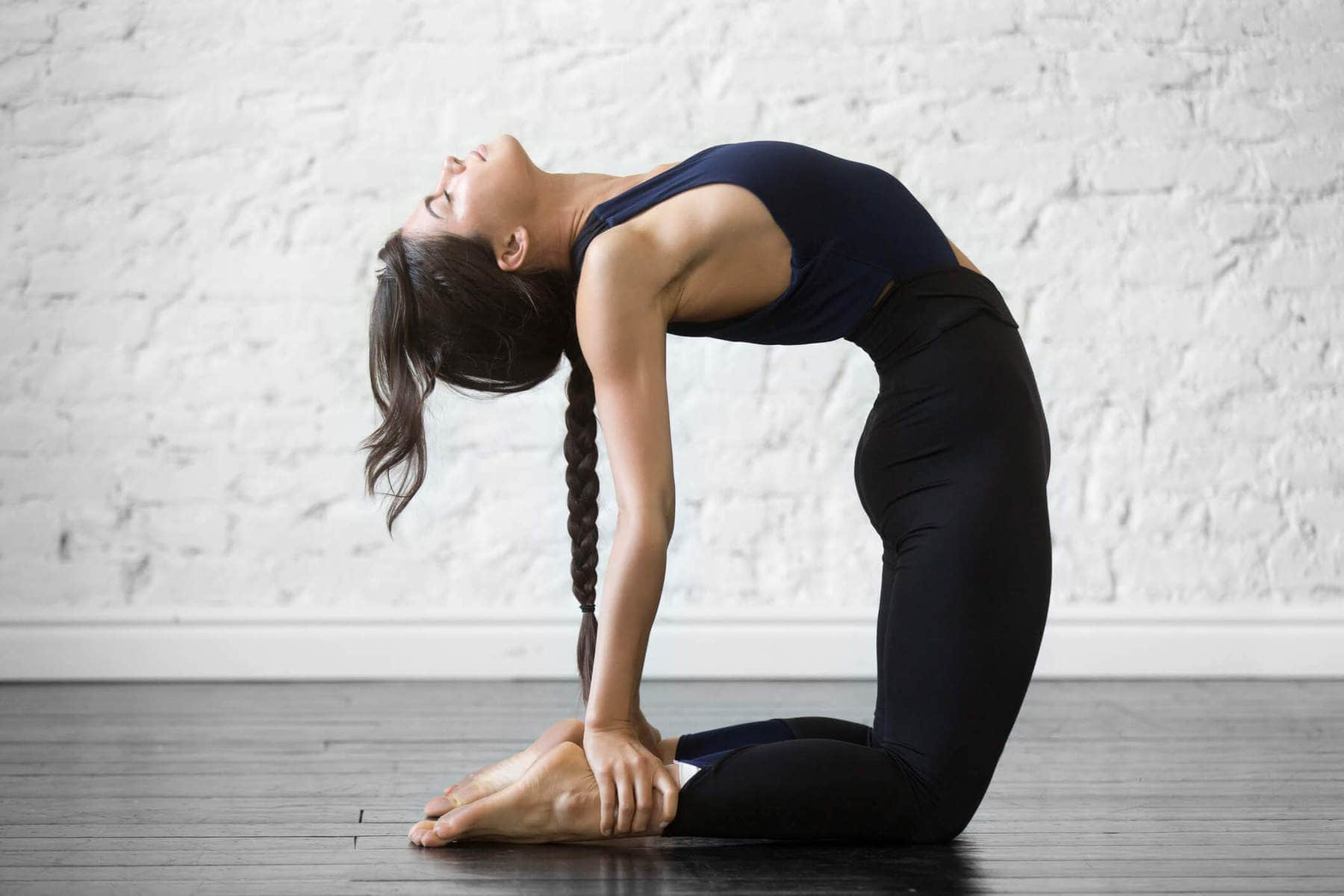
Back to more rigorous stretches with another pair of Bikram Yoga poses. The Camel Pose has us stand on our knees as we bend our back towards the floor till we’re facing the ceiling. This opens up your chest and shoulders, which results in better circulation and digestion. This pose also increases spinal flexibility and assists with the release of tension from your neck, back, and shoulders. This can provide stress relief and reduce anxiety levels.
23. Sasangasana (Rabbit Pose)
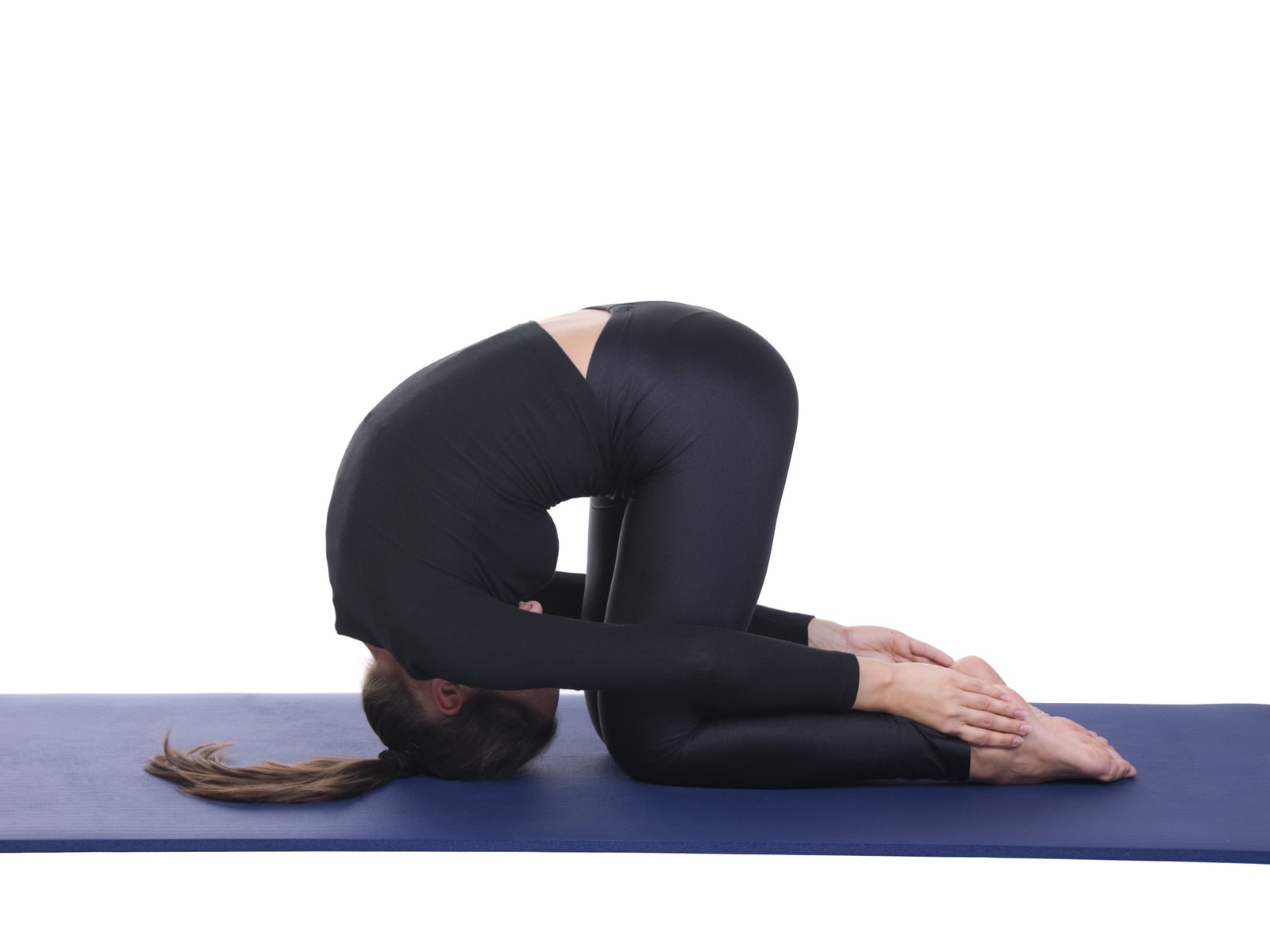
Opposing our Camel Pose, the Rabbit Pose instead has us bend the other way forward until we’re looking at our own knees. This lengthens your spine, while stretching your back, arms, and shoulders. It aims to boost your immune system and balance your body’s hormone levels.
24. Janushirasana & Paschimotthanasana (Head-to-Knee Pose & Stretching Pose)

This posture has us sit with one leg outstretched before bending forward till our head is making contact with our knee. This improves flexibility, particularly of the ankle joint. It also helps balance your blood sugar levels. There is also improved blood flow to your liver, spleen, bowels, and pancreas.
25. Ardha Matsyendrasana (Spine Twisting Pose)
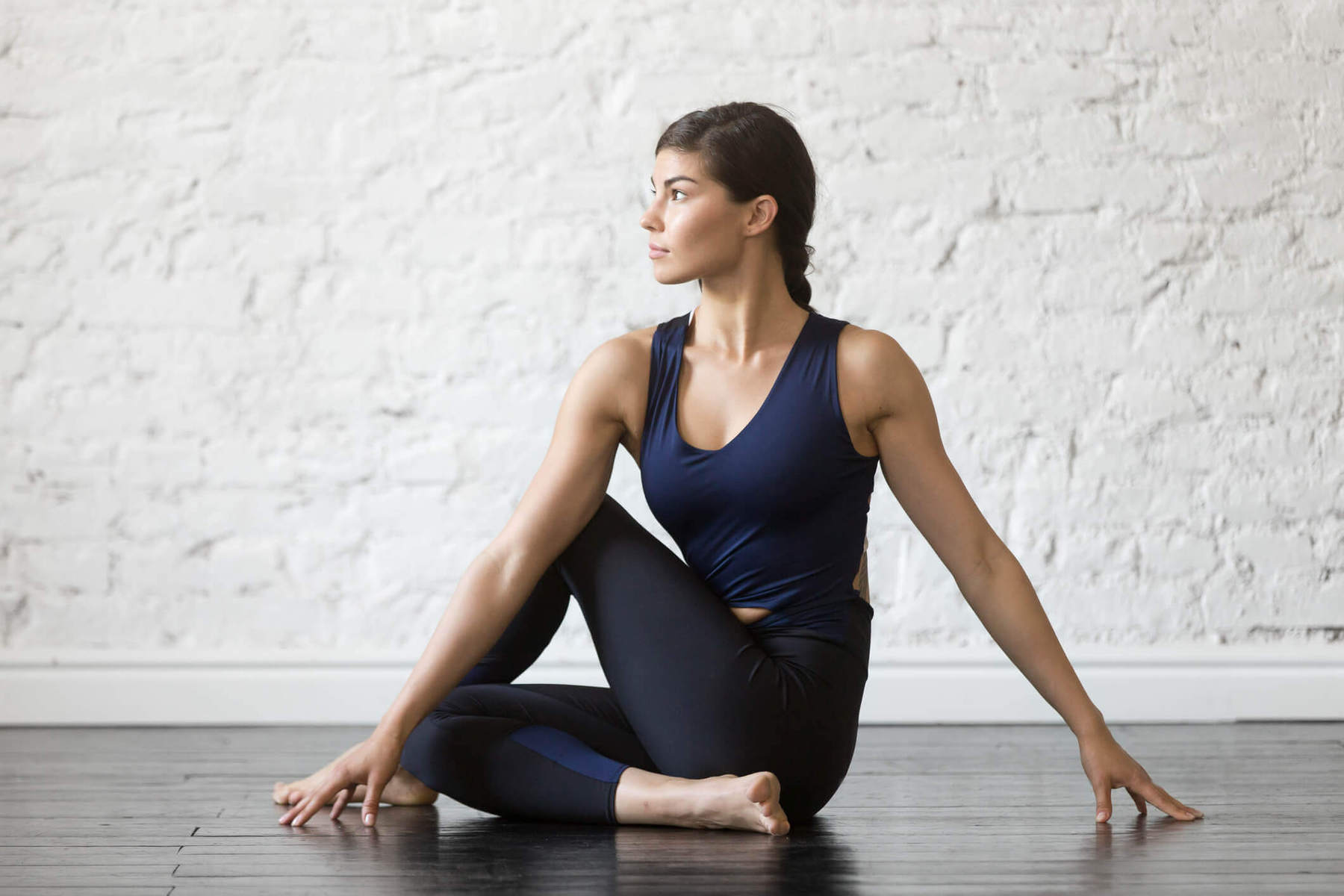
While sitting upwards on the floor, simply pull one leg over the other and then twist your body so its facing the same direction. This stretch stimulates your liver, kidneys and digestive system. The Spine Twisting Pose also increases spine, shoulder and hip flexibility.
26. Kapalbhati in Vajrasana (Blowing in Firm Pose)
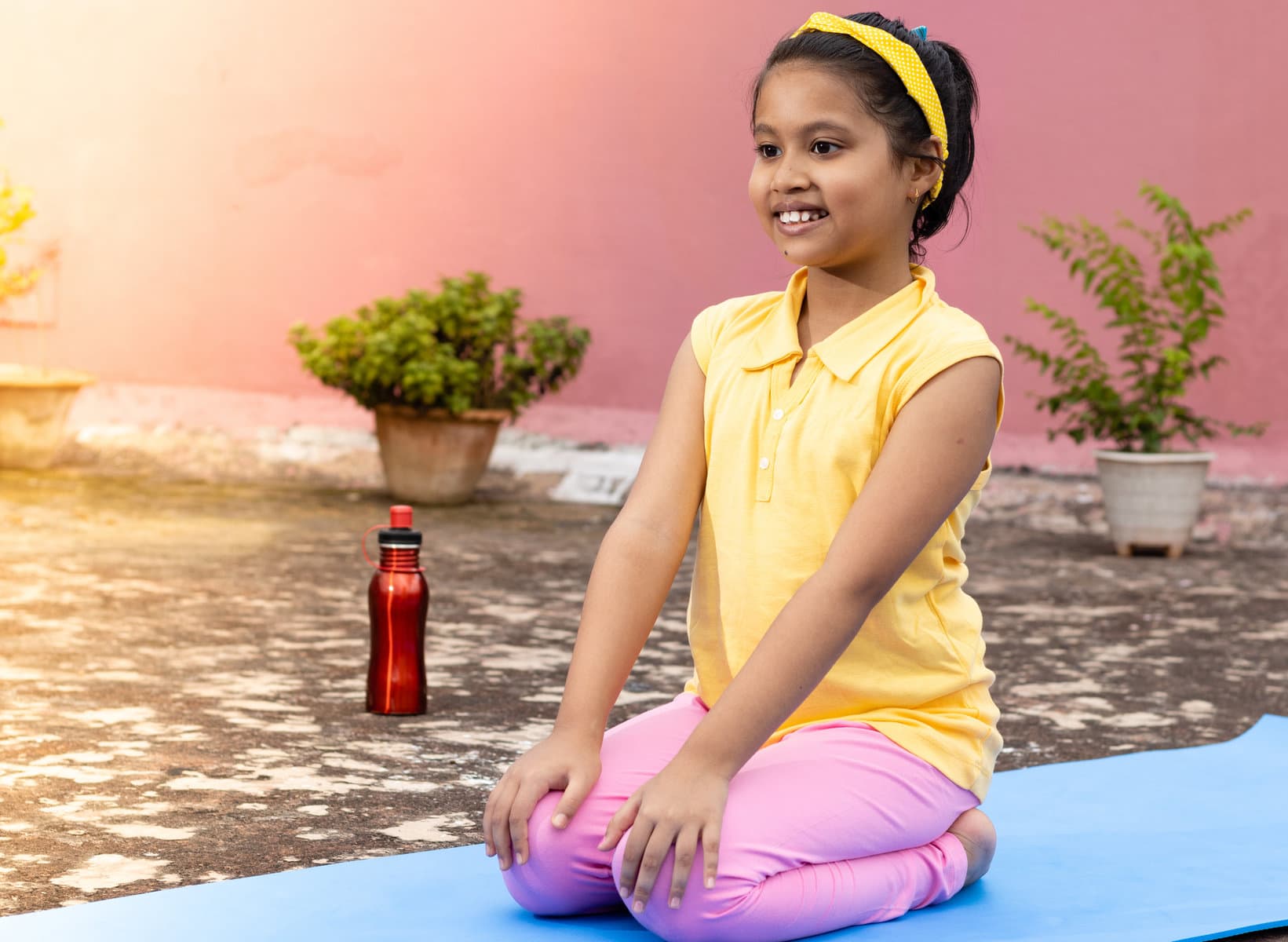
As with the first asana, Standing Deep Breath, the final asana in Bikram focuses on breath. With this pose, you draw as much clean air and life energy (prana) as you can into your lungs while kneeling in Vajrasana. You then release that toxic energy and carbon dioxide forcefully when you exhale. This purification process improves circulation, strengthens your stomach muscles, and stimulates your digestive system. It can also soothe the mind and help you relax and find your breath.
Want to do even more for yourself?
If you’ve enjoyed these 26 Bikram Yoga Postures or if you need help with any of the more difficult Bikram poses, then you might want to join a yoga class for yourself. In which case, there’s no better place to start than with Avaana. Avaana can help you directly compare and contrast yoga classes near you and find the perfect class for any skill level.
Share this article using the social media links to help your friends and family understand just how much of a positive impact these Bikram Yoga Poses can have on their health, fitness, and wellbeing.
Be well, feel good, and smile a lot!



